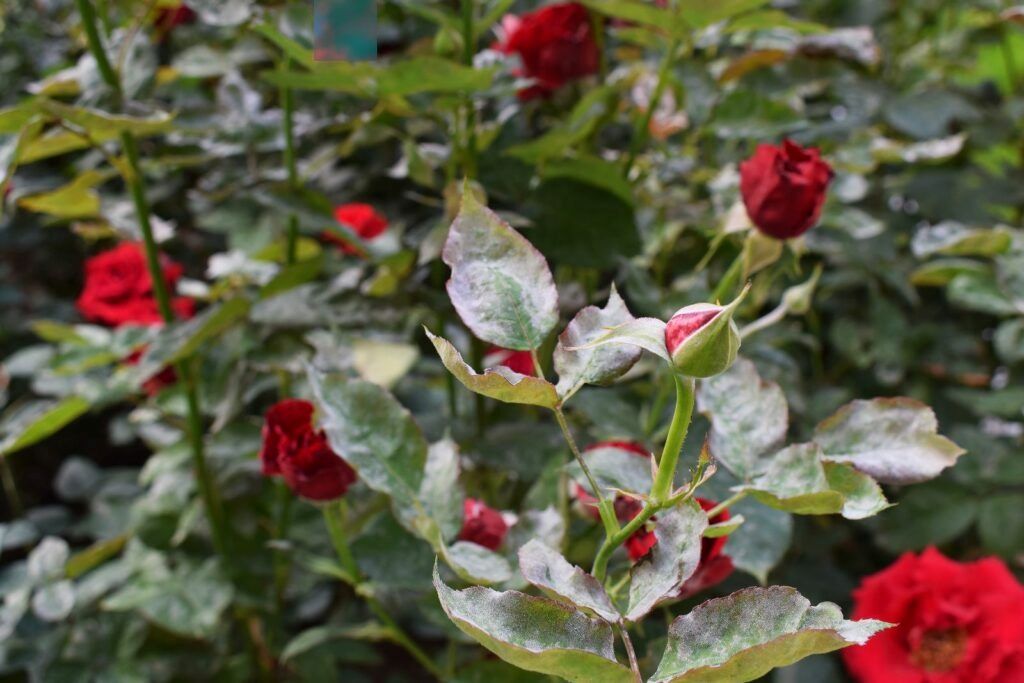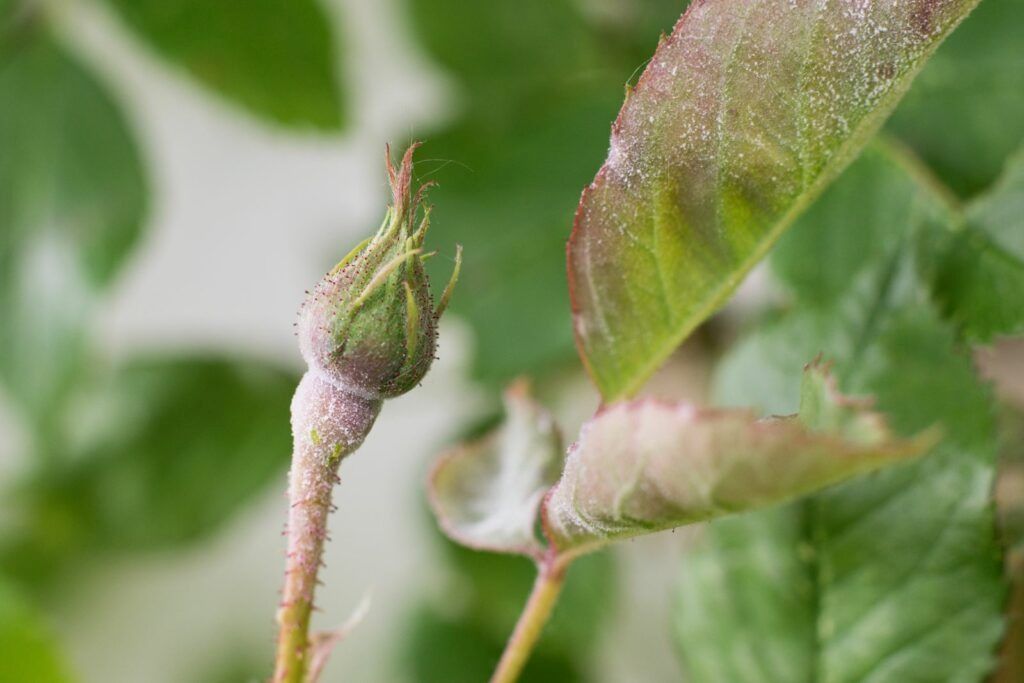
09 Nov White Spots on Rose Leaves: Causes, Treatments, and Prevention for Healthy Blooms
Roses are the jewel of any garden. Their vibrant blooms and timeless elegance make them a favorite among flower enthusiasts. But if you’ve ever walked out to admire your roses only to notice white spots on the leaves, you’re not alone. This common issue can alarm even the most experienced gardeners. White patches, speckles, or powdery coatings on rose leaves are often signs of plant stress, disease, or pests.
The good news? With the right knowledge and care, you can identify the cause, treat it effectively, and restore your roses to full health. In this article, we’ll explore the most common reasons behind white spots on rose leaves, proven treatments, natural remedies, and preventative tips to keep your roses thriving.
Why Do Roses Get White Spots on Their Leaves?
There isn’t a single cause for white spots. Instead, a variety of factors—ranging from fungal diseases to environmental stress—can lead to this problem. Below are the most common culprits:
-
Powdery Mildew
- Appearance: A powdery, white, flour-like coating on the leaves, stems, or buds.
- Cause: Powdery mildew is a fungal infection that thrives in warm, humid conditions, especially when air circulation is poor.
- Impact: It weakens the plant by reducing photosynthesis, causing leaves to curl, yellow, or drop prematurely.
-
Downy Mildew
- Appearance: Irregular white or grayish spots on the underside of leaves, often accompanied by purplish blotches on the top.
- Cause: A water mold that develops in wet, humid conditions.
- Impact: Can quickly spread and cause defoliation if left untreated.
-
Spider Mite Infestation
- Appearance: Tiny white or yellow speckles scattered across leaves. Severe cases show webbing under the leaves.
- Cause: Sap-sucking mites that thrive in hot, dry environments.
- Impact: Leaves lose color, dry up, and fall off, reducing the plant’s vitality.
-
Sunscald (Leaf Burn)
- Appearance: White, bleached patches on leaves, usually on the side of the plant exposed to direct sunlight.
- Cause: Excessive sunlight, especially after watering when droplets magnify sunlight like tiny lenses.
- Impact: Mostly cosmetic damage but can stress the plant if widespread.
-
Nutrient Deficiency
- Appearance: Pale or whitish spots that gradually expand.
- Cause: Lack of essential nutrients like magnesium or iron.
- Impact: Poor growth, fewer blooms, and reduced plant vigor.
How to Diagnose the Problem
Before applying any treatment, you need to identify the root cause. Here are a few quick diagnostic tips:
- Powdery vs. Downy Mildew: Powdery mildew is dry and dusty, while downy mildew appears fuzzy on the underside of leaves and often looks water-soaked.
- Check for Pests: Look closely (or use a magnifying glass) to spot spider mites or their fine webs.
- Location of Spots: Sunscald usually affects the upper side of leaves exposed to sunlight, while fungal infections may start anywhere.
- Growth Conditions: If it’s been hot and dry, suspect spider mites. If it’s humid and rainy, fungal diseases are more likely.

Effective Treatments for White Spots on Rose Leaves
Once you’ve pinpointed the cause, you can take action. Here are the most effective treatments by condition:
Powdery Mildew Solutions
- Prune: Remove and discard affected leaves (don’t compost them).
- Fungicide Spray: Use a sulfur-based fungicide or potassium bicarbonate spray.
- Homemade Remedy: Mix 1 tablespoon of baking soda + ½ teaspoon liquid soap + 1 quart of water. Spray weekly.
Downy Mildew Treatments
- Improve Drainage: Water early in the day and avoid overhead watering.
- Fungicides: Use copper-based fungicides to control spread.
- Air Circulation: Space roses properly and prune dense growth.
Spider Mite Control
- Water Blast: Spray leaves with a strong jet of water to knock mites off.
- Insecticidal Soap: Apply neem oil or horticultural oil weekly.
- Natural Predators: Encourage ladybugs or lacewings in your garden.
Sunscald Fix
- Water Smartly: Water at the base of the plant, not on leaves.
- Shade: Provide temporary shade during peak summer heat.
- Mulch: Keep soil moist to reduce stress.
Nutrient Deficiency Correction
- Soil Test: Check pH and nutrient levels.
- Fertilizer: Apply a balanced rose fertilizer or specific supplements like Epsom salt (magnesium sulfate).
Natural Remedies for Organic Gardeners
If you prefer eco-friendly solutions, here are safe, natural approaches:
- Milk Spray: Mix 1 part milk with 2 parts water. Spray weekly to combat powdery mildew.
- Garlic Spray: Blend garlic cloves with water and let it sit overnight. Strain and spray to repel pests.
- Neem Oil: A natural pesticide and fungicide effective against both mites and mildew.
- Compost Tea: Boosts plant immunity and microbial activity in the soil.
Prevention: Keeping Rose Leaves Spot-Free
The best strategy is prevention. Follow these proven tips:
- Plant in Full Sun: Roses need at least 6 hours of sunlight daily.
- Water at the Base: Avoid wetting leaves to reduce fungal growth.
- Prune Regularly: Promote airflow by thinning out crowded branches.
- Clean Up Debris: Remove fallen leaves and petals that may harbor disease.
- Fertilize Wisely: Don’t over-fertilize with nitrogen—it encourages weak, disease-prone growth.
- Rotate Fungicides: Prevent resistance by alternating between products.
- Inspect Weekly: Early detection prevents major outbreaks.
Frequently Asked Questions (FAQs)
- Are white spots on rose leaves always harmful?
Not always. Sunscald is mostly cosmetic, but fungal infections and pests can weaken your roses if untreated. - Can I use vinegar to treat white spots?
A diluted vinegar solution can help, but it may burn delicate rose leaves. Safer alternatives are baking soda or neem oil sprays. - Will cutting off affected leaves stop the problem?
Pruning helps slow the spread, but you’ll still need to treat the underlying cause. - Do white spots mean my roses are dying?
No, but persistent untreated issues can weaken the plant, reducing blooms and overall health. - How often should I spray my roses?
For fungal issues, apply treatments once a week until symptoms improve, then switch to a preventative schedule every 2–3 weeks.
Final Thoughts
White spots on rose leaves can be frustrating, but they don’t have to ruin your garden’s beauty. By correctly identifying whether the cause is powdery mildew, downy mildew, spider mites, sunscald, or nutrient deficiency, you can apply the right treatment and protect your roses from further damage.
Related Topics:

No Comments